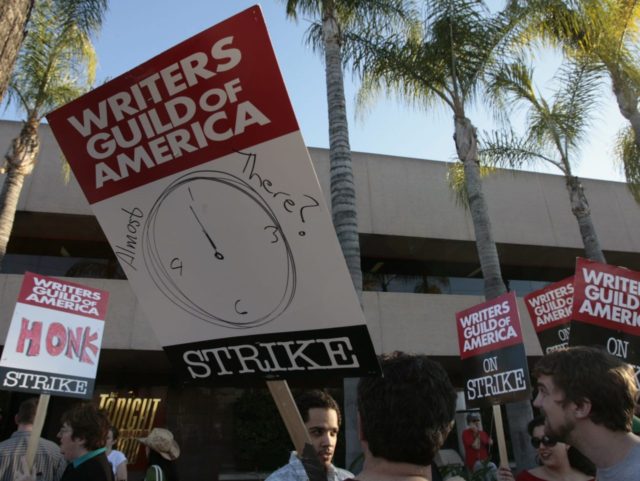Liberal digital media companies are threatened by the policies they support, as a growing wave of leftist blog writers resorting to unionization threatens these companies’ survival.
The Writers Guild of America East organized Gawker as its first unionized digital media outlet in June 2015. Although Gawker was bankrupt in less than a year later, for unrelated reasons.
Since then, the WGA has been able to unionize a growing stable of liberal digital sites including the Huffington Post, VICE, The Root, ThinkProgress, Fusion, Salon and Gizmodo Media Group.
So far this year, the WGA has unionized workers at MTV News, Group Nine, and the Thrillist. In addition, The Intercept’s 32-member investigative journalist staff voted to join last week.
The 4,500-member Writers Guild of America East and 20,000 brothers and sisters of the Los Angeles-based Writers Guild of America West dominated the writers who create television and films for the major media conglomerates for 50 years/ But now the digital space has captured over 25 percent of all advertising revenue.
So far, WGA East has organized the staffs of 11 mostly hard-left Internet publishers. The new 550 union members now represent more than 12 percent of WGA East’s membership, and about 4 percent of the combined national WGA total membership.
Union organizers claim that writers who unionize can look forward to minimum salaries for work, attribution credit protection, residuals, healthcare, and pension benefits. Unions are also telling digital millennials they should organize in the hope that amplified media coverage will cross over into the unionization of other industries.
But opponents of unionization comment that unionized digital writers will go the way of newspaper writers over the last decade. A June 2016 Pew Research Center survey found that 36 percent of U.S. adults learned something about the election campaign in the previous week from a print newspaper. That compared to 44 percent from radio, 65 percent from digital, and 78 percent from television.
The Writers Guild of America is currently in final negotiations before a threatened strike against the Alliance of Motion Picture and Television Producers, which produce movie studios, broadcast networks and cable channels.
The last WGA strike lasted for 100 days in 2007, but that effort backfired as viewers simply went online. The Associated Press reports: “Hollywood is hoping to avoid a crippling work stoppage like the 100-day strike of 2007 that put prime-time TV into reruns and blockbuster movies on hold.”
Perhaps the biggest challenge to unions organizing digital media is that many of the most highly-paid writers have created their own celebrity status. The New York Times motto, “All the News That’s Fit to Print,” means nothing online. The days of a few local newspapers and three television networks controlling access to public thought is over.

COMMENTS
Please let us know if you're having issues with commenting.